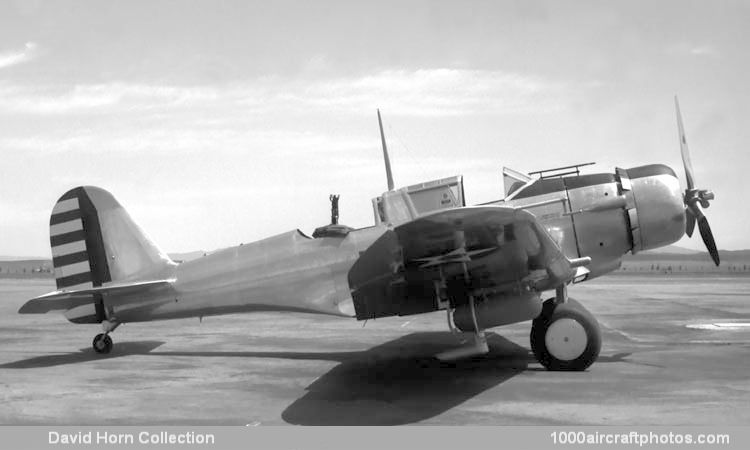11/30/2009. Remarks by Johan Visschedijk: "The Northrop company entered the military market with a development of its Gamma and Delta all-metal monoplanes. As a private venture, the prototype Model 2-C was completed in August 1933 and flown with the registration X12291. In June 1934 it was purchased by the Army and designated YA-13; successfull evaluation was followed by a contract for 110 examples in December 1934.
The YA-13 was powered by a 710 hp Wright R-1820-37 engine, but it was proposed to use the 800 hp Pratt & Whitney R-1830-7 in the production models and in March 1935 the prototype flew with this engine. In this guise it was the XA-16.
Flight trials with the XA-16 were disappointing, largely because it was overpowered, and the production version was changed to have the smaller 750 hp Pratt & Whitney R-1535-11 radial, as the A-17. The landing gear was simplified, with the wheels exposed instead of being totally enclosed in large pants. Four fixed forward-firing 0.30 in (7.62 mm) guns were located in the wings, and in the rear cockpit a single flexibly-mounted 0.30 in gun.
Delivery of the 110 A-17s began in August 1935, and they became standard equipment in attack units, such as the 3rd and 17th Attack Groups, during 1936. Further contracts were awarded in December 1935 to continue production with the A-17A, which had the 825 hp R-1535-13 engine and a retractable landing gear.
Orders for the A-17A totaled 129, but 93 of these served with the Army for only 18 months. In June 1940 they were returned for re-sale to Britain and France; the majority were eventually re-assigned by Britain to South Africa. Two examples known as A-17AS were delivered to the Army in 1937 as three-seat command transports.
The basic Northrop design was developed by Douglas as the Model 8A, for export to several foreign nations. In 1942, 31 Douglas 8A-5s of a batch of 36 ordered by Norway were commandeered by the Army as A-33s with 1,200 hp R-1820-87 engines."
